Imagine a temporary city that sprawls over an area of 1,936.56 hectares, created on the sandy banks of one of the largest River Confluence in the world, that lasts for exactly 55 days where 155 million people showed up from 102 different countries (Instead of 75 invited countries), and during those 55 days of the largest human gathering on the planet which is even visible from space, where not even a single life is lost or suffer grave hurt and the entire city is created in just 4 months and dismantled in one.
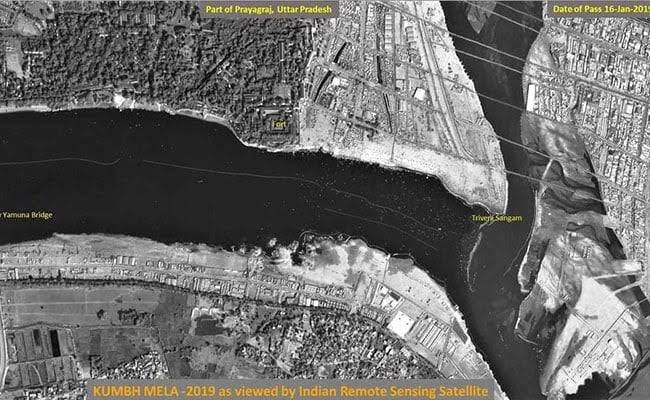
If you can imagine all that, just imagine the odds stacked against the team that does the project management for such a feat.
This is one of most amazing feat of Project Management that quietly slips under the radar because the people who manage this mammoth task is made of just a few qualified persons and an army of highly motivated Indians from various Hindu Organizations and Associations and what is even more surprising is that most of the Project Teams and Ops Team Managers do not even get paid (nor do they expect any payment even in their wildest of dreams).
Welcome to the Project Management Story behind the immense success of the Maha Kumbh of 2019 that took place at the ancient and holy city of Prayagraj in India.
6 Months before the start of the 55 days of pilgrimage the Chief Minister of Uttar Pradesh (The state in which this holy city of Prayagraj exists) called upon the Central Government to allocate some central government resources and think-tank for planning the entire pilgrimage. The Central Government obliged by providing some key figures from Niti Aayog (the principle planning organization under the Prime Minister) as well as some essential personnel for planning and decision making. The central government also topped up the state fund with and equal contribution thus making the entire budget around INR4,200 crores (USD 592.6 Million) for the grandest of all human assembly on the planet and something that happens only once every 6, 12 and 133 yrs. (based on the ancient astronomy based mathematics that predicts the lining up of all the 9 planets during specific position).
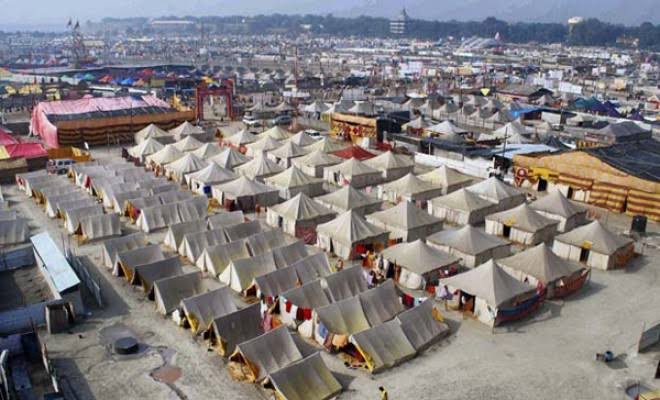
Chief Minister ensured that he himself would be one of the key stakeholders in this project. He was wary of the past instances where terrorists and communal groups had blasted bombs, weakened walking bridges and generated stampedes that killed scores of pilgrims. His major focus was on Risk Identification and Mitigation from the word go. Any plan that was brought to his presence had to go through several rounds of Risk Management and Resilience tests. Early in the planning, some planners felt as though the Chief Minister is finding ways to scuttle the project, only to realize later on what he was actually trying to do. And soon this culture of “Risk Proofing” of Ideas and plans started to trickle downstream.
On 10th July 2018 a core Program Management Team along with its own Program Office was created. This core team consisted of the Niti Aayog personnel and key figures from each of the major Hindu associations and organizations which would be involved in Kumbh Mela Organizational work as well as a team of senior officers from state government representing different functionaries like Security, health, transportation, public works, procurement and water resources. Apart from the CM there were three other officers that were identified for cutting through any kind of bureaucracy delaying or preventing any kind of decision making or obtaining help from any other government or semi government organization who were not directly involved in the Kumbh Project.
Since the entire Kumbh city was to come up on the Sandy Banks of the confluence of rivers just the transportation of construction material as well as people would be one of the most difficult tasks. This was also a very eco-sensitive zone, hence no cement or any kind of permanent roads could be made. This was overcome by making 173 Kms of main roads and 106 Kms of minor roads on the sand by placing nearly 80,000 “patterned Steel plates” which allowed even the heaviest of trucks and cranes to go over them without upsetting the sandy planes.

This was not all. The pilgrims would have to cross the river confluence of three rivers to go from one sandy grid to another. For this the Army sapper’s technology of Pontoon bridges were put to good use. 18 Pontoon bridges (two lanes wide each) using 1,537 pontoons were built connecting every conceivable possibilities of people walking across the rivers from one grid to another. The design and system went through a rigorous risk management to ensure that the process itself would not allow any stampedes or rush even if the terrorists provoked it. This also had ample redundancy to allow ambulances to quickly go across the bridges if a need arose. The overall capacity of the bridges was 500,000 people per hour without using the redundant bridges.
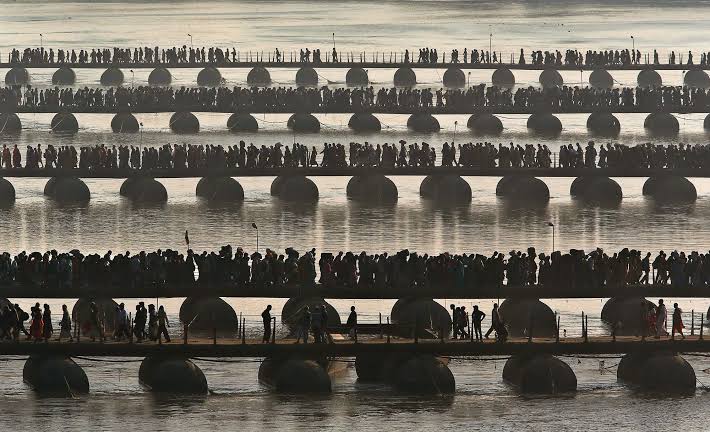
The most important part of this pilgrimage was the “holy dip”. This resulted into creation of 35 Ghats (some even temporary) ones to allow for the public as well as the group based holy bathing. None of the naturally created Ghats were altered and the temporary Ghats were just wooden platforms that could accommodate 100,000 people at a time without crowding. This presented another problem. With so many people taking a dip almost at the same time, on scheduled holy days, there was a risk for drowning, contamination of water and infections among people. A very interesting concept was created. About 500 kms away a huge Dam called Tehri was instructed with precision sequence of opening and closing of gates on specific dates and at specific timings. This timing was done to ensure that the water flow would increase just at the time of Holy Bathing without creating a pushing wave. The timing was impeccable and several proof of concepts had been tried out earlier to streamline the process. This was done in a way that no specific instructions would have to be given on a daily basis and yet the flow would increase just at the right time. For preventing any stampede and accidental drowning, human chains made from swimmers and lifeguards were created from RSS workers and other Hindu Organization volunteers whose only job was to keep an eye out for such events and regulate the bathing traffic. 10 Such human chains were created for every of the 35 ghats.
Due to the indifferent attitude of the previous governments laced with corruption there were over 6,000 polluting units that were pumping sewage and pollutants into the river upstream. All these units were closed down either as a part of the “Clean Ganga” program or for this specific event. This made the water almost drinkable within a week. The organizers also decided to throw some low intensity water soluble anti-infactants into the water flow up-stream and timed it with the holy bathing timings.
The Security forces were made up of several layers, right from Military Intelligence wing, RAW Wings and Anti Terrorist Unitis for intelligence gathering to deployment of Rapid Action Forces, RSS Volunteers, Police Personnel and even deployment of plain-clothes intelligence officers with watertight escalation and reporting mechanism in place to allow local movement as well as a centralized action. Highly trained National Security Guards (NSG Commandoes) and Anti-terrorist Squads (ATS) forces were kept at the outermost layer, fully armed and ops-readiness at moment’s notice. They were deployed in way not be highly visible or conspicuous. This was so successful that over 22 terrorists were caught even before they could come near the Kumbh City.

Planning for drinking water was provided as tankers for general public and in hygienic stainless steel temporary plumbing directly to the temporary houses and settlements and tents.
For health and welfare a central hospital was created with 1,200 beds replete with every emergency and diagnostic facility and with doctors on rounds to man the same. Besides this there were at least one full hospital in every of the grids with several ambulances each. Each of the RSS worker was trained on CPR and basic first aids. Several emergency call towers were created which were configured in such a way that if one called from that tower, the emergency response team would know the exact location from where the call came from. The most amazing part were the presence of “Ambulance Boats” replete with all emergency supplies and equipment. The best part was that ground security staff provided this security without any weapons on them. Not even a baton.
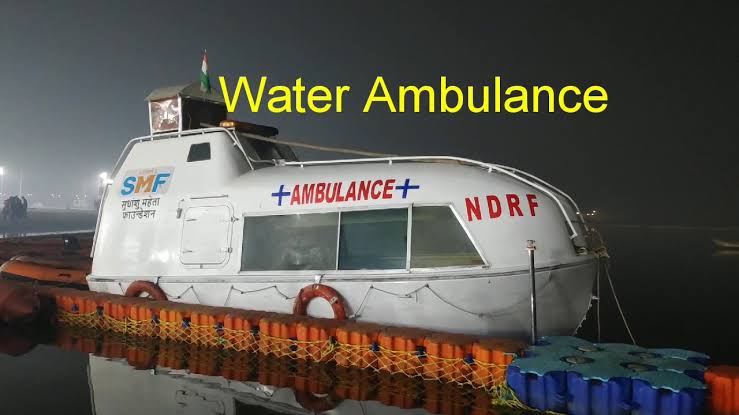
Special arrangement of electric vehicles were made for the elderly and the specially challenged. Every part of the Kumbh City was accessible to wheel-chairs.
Artists from all over the country, from modern artists to traditional artists were called to make Street Art around the entire temporary city. This was done so amazingly that the 4 Member Team from Guiness book of records declared it the largest public arts festival anywhere on the planet ever.
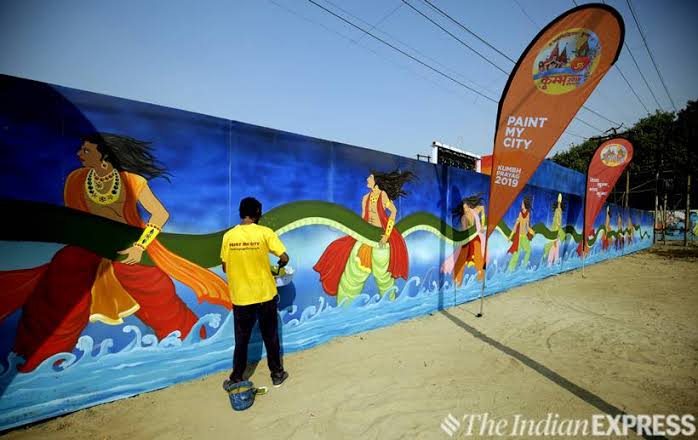
Among the several Guniess Books of world records was the world record for Public Sanitation (in terms of sheer scale and size) and Waste Disposal (in terms of quantity and disposal). 34,000 toilets (each serving 4 persons at a time) with zero discharge and bio-digester facility were created for public and this did not include the toilets attached to the temporary settlements. Over 100,000 urinals with bio-containment and digester facility which prevented the pilgrims to walk all the way to the toilets for urination.
The signage used were in 4 Indian Languages. Besides settlements meant for pilgrims from different countries had signage in that countries respective language.
Arrangements were made for removal of nearly 100 Metric Tons of Garbage every single day.
Special trains were arranged for this event to allow transportation of such heavy amount of additional pilgrims to the Kumbh City. For this temporary station was created and was later removed (as if nothing ever existed there ever) once the pilgrimage was over.
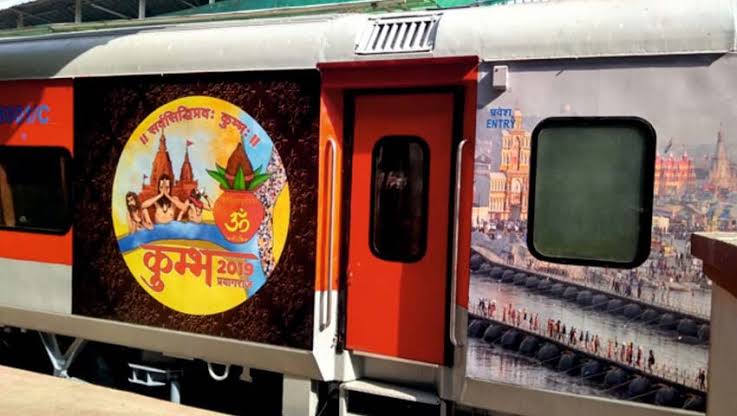
The icing on the cake was the availability of every kind of food. Vegetarian food from almost every corner of the country, Chinese food, Japanese food and hosts of other continental and international cuisine. All food was vegetarian and no one was allowed to bring food from outside.
The result of this planning was that even when much more people actually ended up coming there, nothing needed to be arranged because of heavy redundancy of resources, no criminal activity was reported, no one got hurt (unlike the 2013 Kumbh where terrorists created a stampede by blasting low intensity bombs resulting in 26 deaths), no family member got lost, no one suffered from any problems due to lack of medical support and no terrorists could get into the complex.
Because of such an amazing facilities and management coupled with safety and security the traditional commerce in this Mela amounted to USD 7.8 billion worth, the highest ever in this mela or anywhere else in any fair or human get-together.
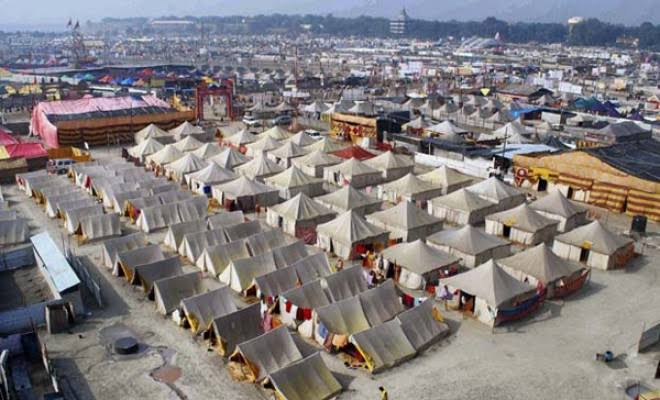
There was however one small miscalculation. Just one. With so many volunteers and security personnel the numbers of toilets turned out to be less on peak days. This forced the volunteers to visit the permanent establishments nearly 4 kms away to relieve themselves. However this has now been very well documented and included in the plans when this happens next.
There is no better feeling than a Plan Coming together.
And how.